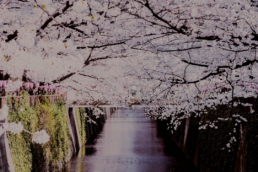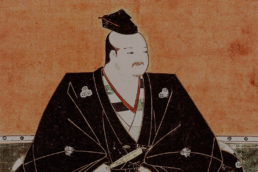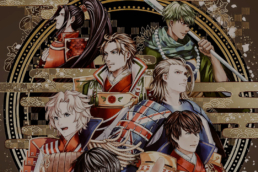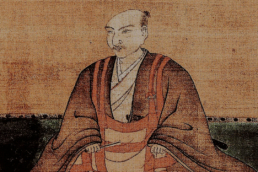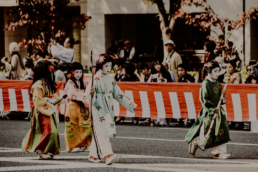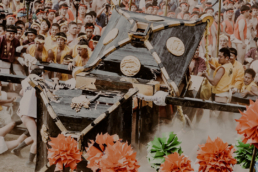Sakura, an in-depth look at the flower symbol of Japan
We continue our series of in-depth articles dedicated to the Japanese culture and today we talk about Sakura, the flower symbol of the Rising Sun. "The perfect flower is a rare thing. One could spend a lifetime looking for it, and it would not be a wasted life."
Sakura 桜 Symbolic flower of Japan
Guest Author: Flavia
This is how Ken Watanabe began in a scene from the famous film 'The Last Samurai' (2003) as the rebel samurai Katsumoto, against the backdrop of a beautiful Japanese garden. How could we not remember this scene from the film which, despite some historical inaccuracies, is able to give us moments like this. Surrounded by splendid trees in bloom, Katsumoto-Watanabe is simply staging the prototype of Japanese aesthetic sensitivity towards nature. In this case, towards flowers. But here we are talking about one flower in particular... the cherry blossom, an undisputed object of age-old admiration: the Sakura (桜 - さくら).
We are all familiar with cherry blossoms: their beauty is obvious, admiring them a natural consequence. This, I would say, needs no explanation. We can, however, talk about the particular importance of this delicate little flower in Japan, so much so that it has become a "moral" symbol (the official one is the chrysanthemum).
The term 'Sakura' refers to both the flower and the tree - known as the 'Japanese cherry tree' - a type of cherry tree characteristic of the Far East. There are about a hundred varieties of Sakura in Japan, including the big cities. But the most common are the Yamazakura and especially the (Somei-) Yoshino, with its typical pale pink-white colour, which has been admired by the Japanese for hundreds of springs.
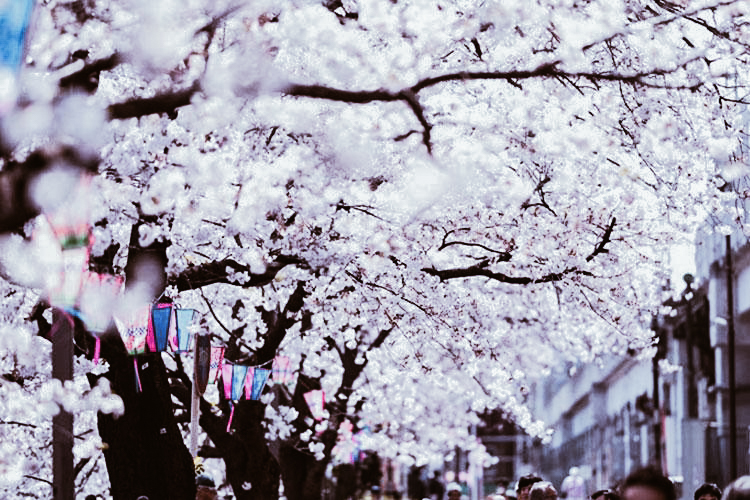
photo credits: japan.stripes.com
The Sakura is an institution in Japan, with its own special symbolism and deep meaning. It appears on the famous 100 yen coin and frames Fuji san, Japan's other great symbol, on the back of the current 1000 yen note. It is so popular that the National Meteorological Agency issues a special Sakura Zensen ( 桜前線 ) bulletin every year to update on the status of the flowering. The media informs the population daily about the best spots, so that they can adjust for the beloved Hanami (flower-gazing) activity, deciding where and what variety of Sakura to see.
Flowering proceeds from south to north, as the climate is milder in southern areas. So if you arrive in Japan when the flowering has already passed in the centre-south, look at the calendar, you might still be in time to catch them in Hokkaidō!
Mankai 🌸 Flowering
The average flowering time varies according to geographical location, but in any case it is short: a few days, maximum ten days. It starts in Okinawa, around the end of January, gradually moving northwards with the last buds opening around mid-May in Hokkaidō. This is the approximate time period. Bad weather, disturbances or sudden changes in temperature can obviously affect the duration of flowering, given the extreme delicacy of the little flower. It all depends on the climate and the year: it can happen that the flowers bloom a little earlier or later, or that the blooming is interrupted by a sudden change in climate. The time of the flowering boom is known as Mankai (満開), which in fact means 'full opening'.
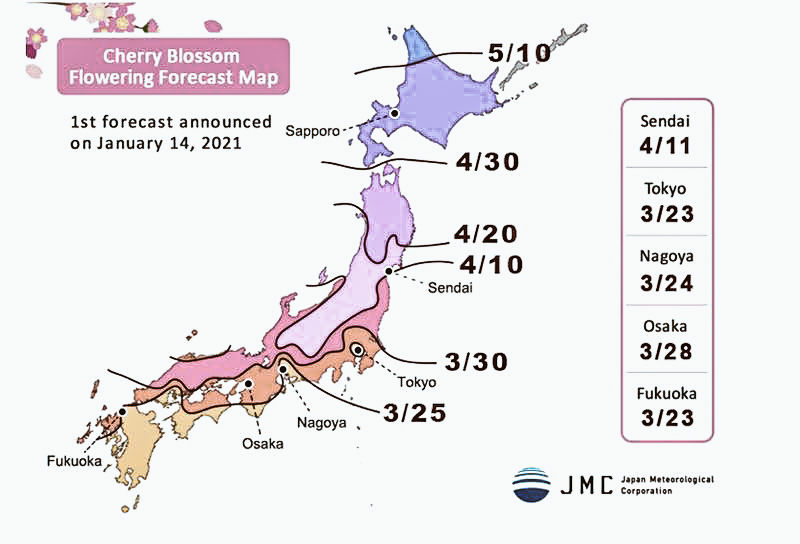
photo credits: japan.stripes.com
As mentioned above, most cherry trees are of the Somei-Yoshino variety, but there are over a hundred species. Some are even capable of producing edible fruit. Of the criteria for distinguishing between the different types, the most immediate is undoubtedly the number of petals, which can be ten, twenty or even more. The most common are the classic five-petalled Sakura, both wild and cultivated.
🌸 Types of Sakura
But let's look at some examples of more unusual cherry trees. In addition to Somei-Yoshino, the most cultivated and popular, we can find:
- Yama-zakura (山桜), the 'Mountain Cherry'. Very popular, it ranks right after Somei-Yoshino in terms of popularity. It has large pink buds and five petals.
- Fuyu-zakura (冬桜), or "Winter Sakura". As the name suggests, it is a cherry tree that begins to blossom in autumn and continues in winter, although not continuously.
- Yae-zakura (八重桜), the "Double Cherry Tree". So called because of its 'reinforced', i.e. very full-bodied, bud with more than five petals. It is associated with the ancient capital Nara (奈良).
- Shidare-zakura (枝垂桜), i.e. "weeping cherry tree" because its branches fall, like a willow, creating a cascade of pink flowers. It is the official flower of the Kyoto prefecture.
- Ichiyō (一葉), "a leaf". It owes its name to a leaf-like pistil that emerges from its centre when fully open. It is one of those that can have 20 to 40 petals.
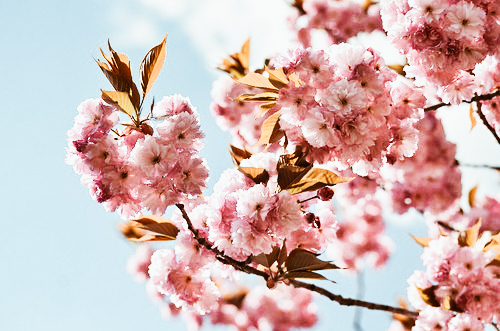
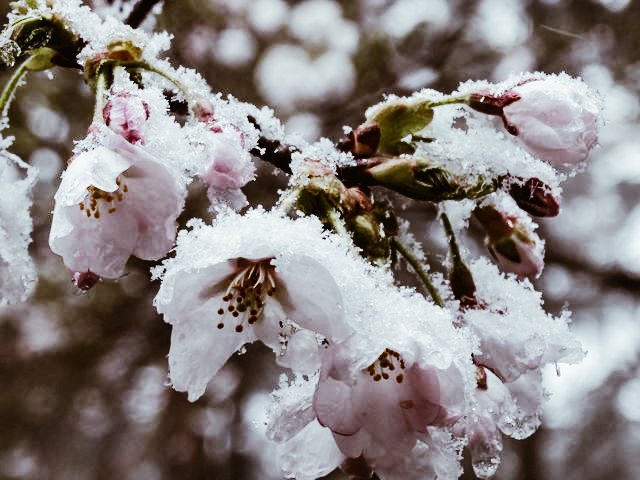

photo credits: Akemi K on Flickr, medigaku.com, Pinterest
Ippon-zakura (一本桜) are defined as all cherry trees planted "in solitude". These include Japan's three great cherry trees, the Sandai-zakura (三大桜). The trio consists of the Jindai-zakura in Yamanashi, the Usuzumi-zakura in Gifu and the Takizakura in Fukushima. Jindai and Usuzumi belong to the Edohigan variety (from which Yoshino is also derived), while Takizakura is a weeping cherry tree. In particular, the Jindai-zakura, located in the Jissōji temple (實相寺), is perhaps the oldest in Japan: it is about two thousand years old and has a circumference of 13 and a half metres!
Spring (春), season of hope
The act of contemplating trees in blossom dates back to the Nara period (8th century). Initially the prerogative of the imperial court of Kyoto, over the centuries it was extended first to the category of samurai and then to the rest of the population. Let us say that in the beginning it was the plum tree (梅-Ume) that was the object of attention. The plum tree represented the link with China, as it originated there. But already in the Heian period (8th-12th centuries), due to the interruption of relations with Middle Earth, the Ume was ousted by the more autochthonous Sakura. From then on, spring-themed poems began to refer to Sakura even only as "flowers" (花-Hana) and the word "Hanami" also became interchangeable with "sakura". Linguistic details, however, are indicative.
Spring (春- Haru) has always been characterised as a symbol of rebirth, of generating power.
In ancient times, the blossoming of cherry trees was associated with prosperity, as it presaged an abundant rice harvest. In order to propitiate a good harvest the following year, the beginning of the planting season was opened with a series of rituals ending with joyful celebrations under the Sakura. In the 18th century, Shōgun Yoshimune Tokugawa further promoted this custom by planting Sakura trees in various areas.
Today, spring is the season for students, graduates and undergraduates, who rely on the auspiciousness of the blossom. April marks the start of the new school year for students, while graduates and many school leavers are preparing to enter the world of work. April also marks the start of the new fiscal year in Japan. In short, the cherry blossom season brings with it some beginnings in that land. Therefore, it is duly celebrated with the Sakura Matsuri (桜祭り) festival.
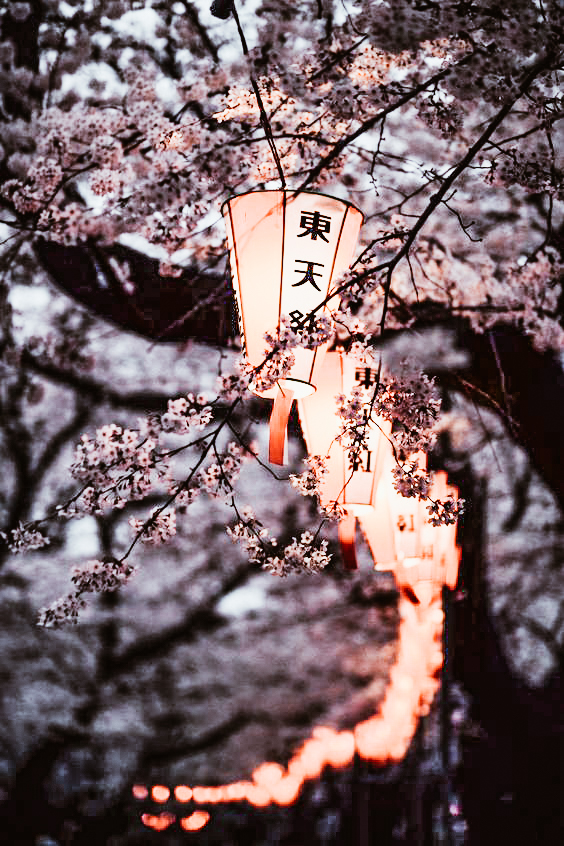
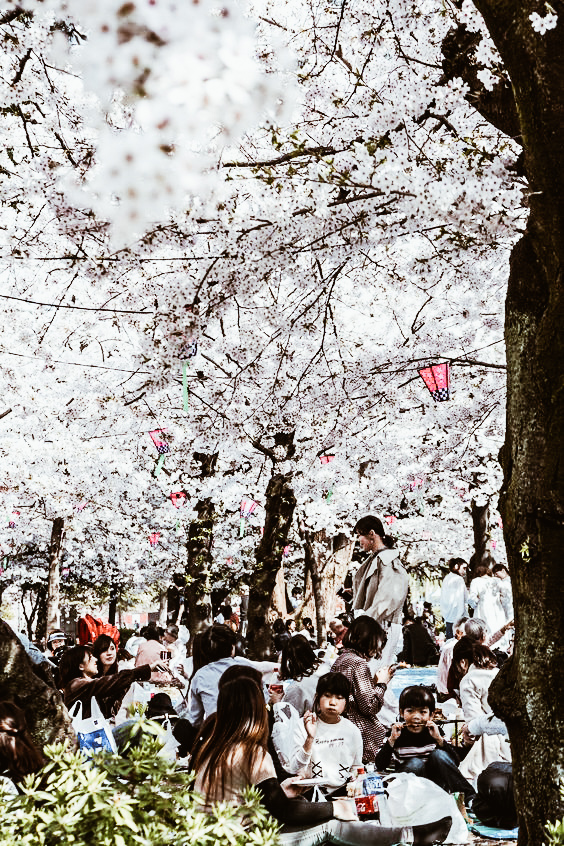
photo credits: Pinterest, Pinterest
Sakura in sweets and delicacies
Sakura and spring are also celebrated through food, in keeping with good Japanese tradition. Famous is the Hanami Bentō (花見弁当), or the bentō that is a must during a picnic under the cherry blossoms. For those who don't know, the bentō is a box for a picnic lunch, used by the Japanese all year round, but in this period it has a Sakura theme. You might find Sakura Onigiri (桜おにぎり) in there, for example, rice balls with salted Sakura on top.
However, there is also cherry blossom tea (桜茶, Sakura-cha), possibly combined with Sakura-Mochi (桜餅), a typical rice cake with red bean paste, wrapped in a salted cherry leaf. Sakura infusion is offered to newlyweds on their wedding day as it is considered a good omen. Wagashi (和菓子) - the traditional Japanese confectionery - come in a variety of sakura-themed varieties. Again, among the more commercial products: just as you can have Matcha-milk, there is also an all-pink Sakura-milk. And we could go on and on, but perhaps we'd better stop, otherwise our mouths will water too much!


photo credits: kitchenbook.jp, pinterest.fr
Hanami (花見), admire the buds
Hanafubuki (花吹雪): "snowy storm of buds". This is how the spectacle of falling petals from cherry trees in bloom is defined, whose rain colours the landscape in a kind of "spring snowfall". If one of these petals (花びら- Hanabira) falls into one's sake glass while making Hanami, it is a propitiatory sign of good health.
As mentioned at the beginning, the word "Hanami" means the practice of looking at cherry blossoms (花= flower(s), 見= watching). Nowadays, Hanami celebrations can range from simple picnics to more elaborate celebrations with music and entertainment. They can also take place at night, in which case, we talk about Yozakura (夜桜) or "sakura by night". The result, you can imagine: an evocative nocturnal Hanami, amid paper lanterns and moonlight.
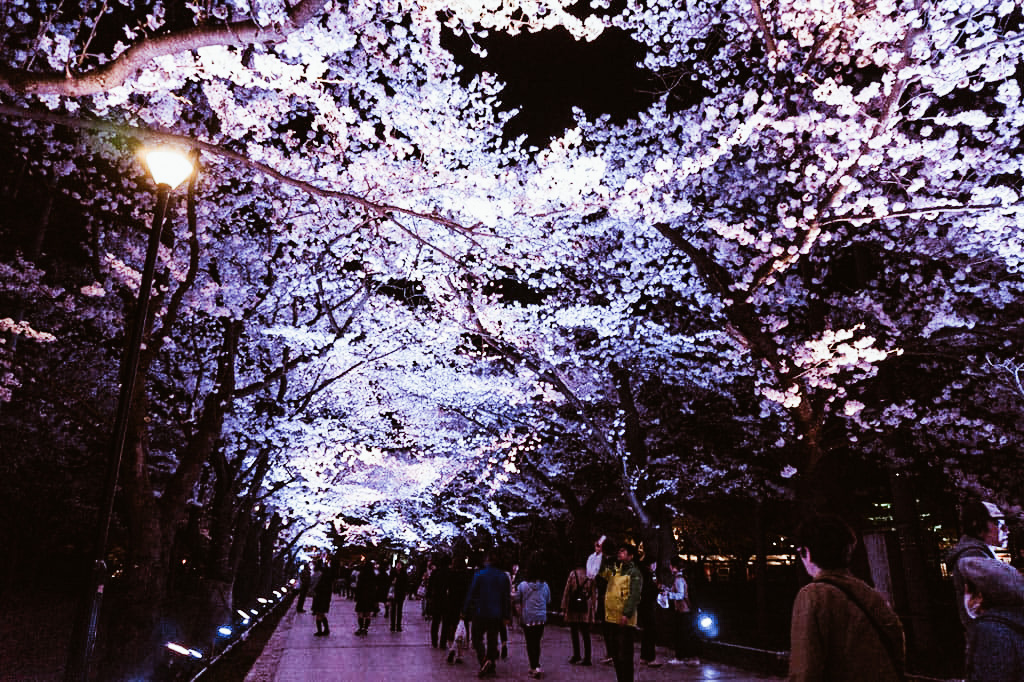
photo credits: power-shower.com
However, the peculiarity of Hanami is not in simply witnessing this spectacle of nature: it is in assisting it by capturing its fleeting appearance. The beauty of the buds also lies in their transience. In those who contemplate them, a feeling of sweet melancholy arises... which the delicacy of these flowers is able to evoke when, having detached themselves from the tree, they float carried by the wind or a delicate breeze, to then settle on the ground. An emotion given by the realisation that this is nothing other than the ultimate nature of human existence itself: destined, sooner or later, to have an end.
"So I come to this place with my ancestors and a thought comes back to me: like these sprouts we are all dying... recognising life in every breath, in every cup of tea, in every life we take away... " [ Katsumoto Moristugu - The Last Samurai ]
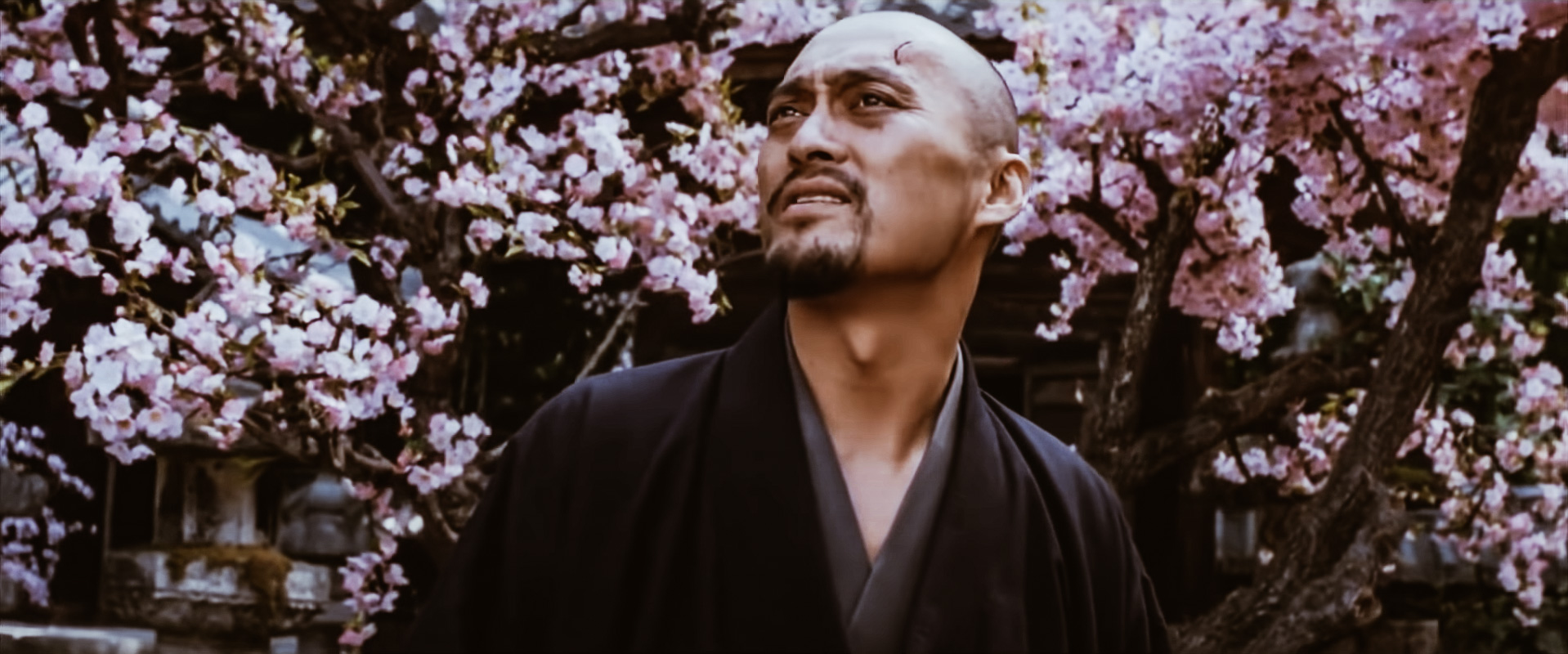
photo credits: YouTube
Symbolism of Sakura: mono no aware (物の哀れ)
The symbolism of Sakura is therefore both sweet and bitter, but this should not surprise us, as we are familiar with the Japanese feeling of "Mono no aware". In other words, a "pathos for things" characterised by a delicate hint of nostalgia, due to the awareness of their constant change. A concept that our Sakura embodies to perfection and of which he inevitably becomes the spokesman. Its beauty is enchanting but evanescent, ephemeral. So contemplation becomes sweet because of the delicacy of the flower, but also melancholic... because it is aware of its evanescence. Thus we contemplate its splendour but with an aftertaste of sadness. In a few words, this is the essence of Sakura.
Once again we are faced with an aesthetic that transcends the exterior. An exterior whose beauty hooks individuals, then leads them to a wider form of contemplation. We have seen this well, also in our article dedicated to Wabi-Sabi 侘寂. This has never been more true than in the case of the Sakura.
Cherry blossoms thus symbolise the transience of life and cyclicity. Because they blossom in all their glory, but their show remains for a limited time. The transience of life, youth and beauty: a metaphor that nature itself seems to want to offer every year and which Japan has been particularly careful to capture. At the same time, however, they are also a symbol of (re)birth and hope... because every year they come back to bloom in all their splendour.
Wonderful and a symbol of vitality on the one hand, extremely fragile on the other: this is their dual nature. Given this awareness, the reference to Buddhism is inevitable.
Symbolism of Sakura: other meanings
Other more specific meanings attributed to Sakura have to do with the number 5. So, naturally, it is the classic five-petalled cherry tree that best lends itself to this type of symbolism. The number 5 is said to recall the Japanese cosmogonic myth (about the birth of the 'cosmos'), according to which there were originally two gods, Izanagi and Izanami, who fathered five children; the birth of the fifth child, the god of fire, would prove fatal to the mother-goddess Izanami. Izanagi, distraught, thus killed this son, from whose parts the mountain gods would then originate. The number 5 also refers to the Japanese esoteric Buddhist concept of the five orientations (cardinal points plus the centre) and the five elements of water, fire, earth, ether and vacuum.
More generally, cherry trees can also be associated with clouds simply because of a visual issue: their mass blossoming can be reminiscent of clouds in the sky. A bit like the expression 'Hanafubuki' we saw earlier, where fubuki (吹雪) alone means 'snowstorm'.
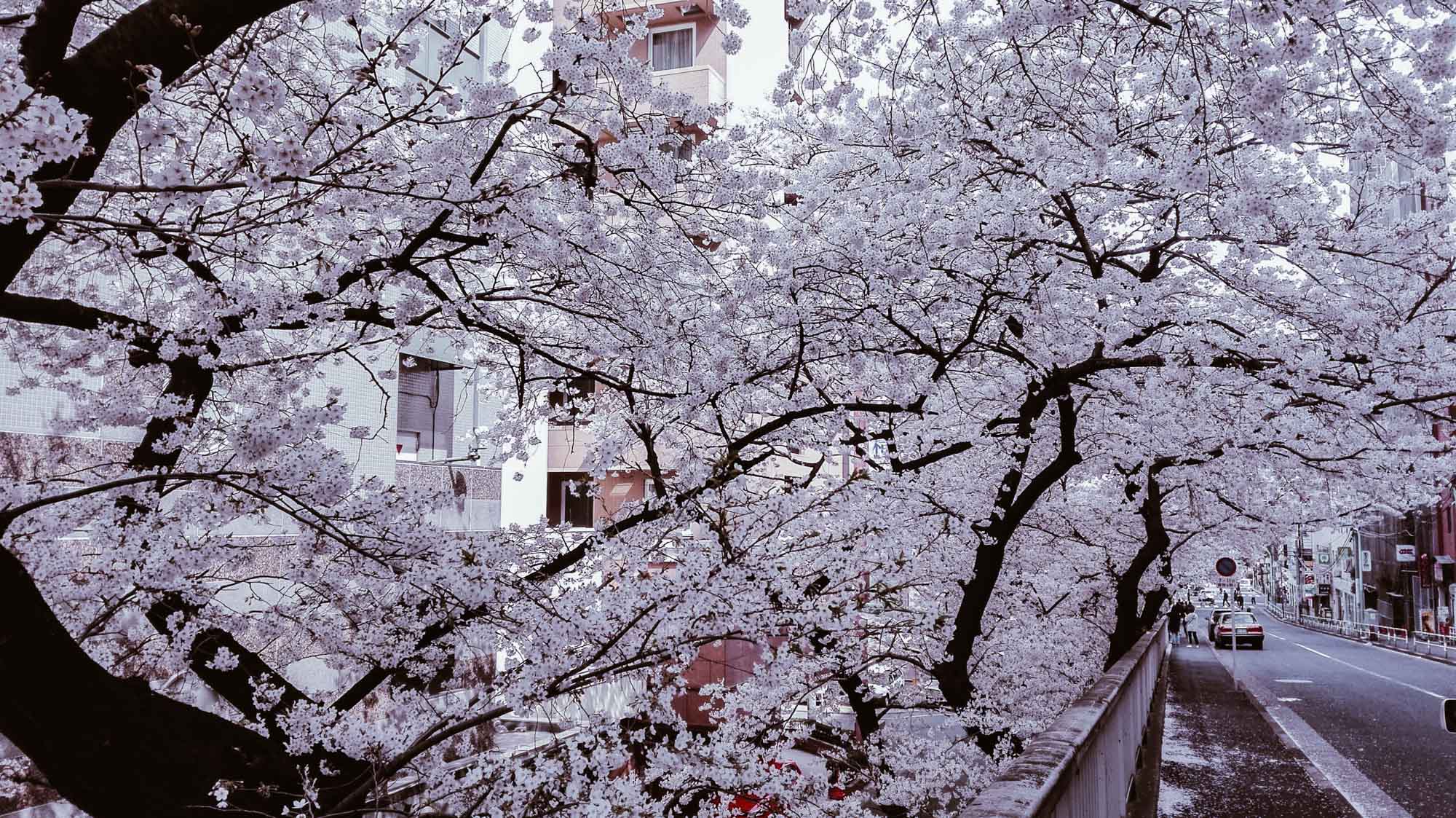
photo credits: Flavia
As the Sakura, so the Samurai
But back to our Katsumoto-Watanabe, his sentence actually ended with "...this is Bushidō". In fact, Sakura was also associated with the ideal of the way of the warrior and the figure of the samurai (侍), so much so that it became the emblem of the category. You will say, where is the similarity? In the fact that the cherry blossom embodied the qualities typically associated with the samurai (courage, purity, honesty, loyalty...). As the Sakura dies at the height of its splendour, so the samurai at the height of his vitality and strength was ready to die if the time came. In this sense, his life, however grand, was as fragile as that of a cherry blossom. However, he was not afraid of death, since it was experienced as a last ideal act and the only possible honourable end, in the name of extreme loyalty to his values.
In the cherry tree, the bushi (warrior) found his model and identified his life with it. Just like the delicate little flower, he had to lead his existence giving his all, through dedication in every gesture, until his last sigh. All that mattered was to "burn" as much as possible through that fuel, which was his life force. In all this, there could be no room for the fear of death. On the contrary, it was in the warrior's last moments that his beauty shone brightest.
So the Sakura, so the bushi: just like in the proverb "Hana wa sakura-gi, hito wa bushi" ( 花は桜木-人は武士 ) that is "Among the flowers the cherry tree, among the people the warrior". The samurai in battle could fall under the blows of the opponent, just like buds that fall to the ground detached from the branches by a gust of wind or rain. Just like so many small, triumphant buds, the samurai flourished, only to meet their fate.
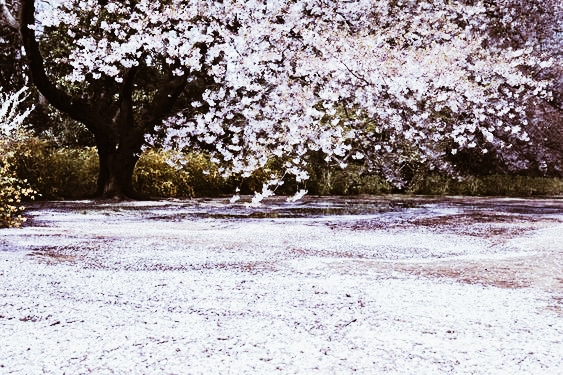
photo credits: Pinterest
This identification was also used in various ways by Imperial Japan centuries later. Among others: the Sakura was reproduced on the sides and in the name itself of the Ōka ( 桜花 ) airplanes to symbolise the extreme act of the Tokkōtai (Special Attack Unit) Kamikaze at the end of World War II. The pilots themselves, on the verge of their suicide mission, are said to have embarked carrying a cherry branch.
Nowadays, the Sakura may symbolise the martial arts.
"Woman sitting under the cherry blossom trees"
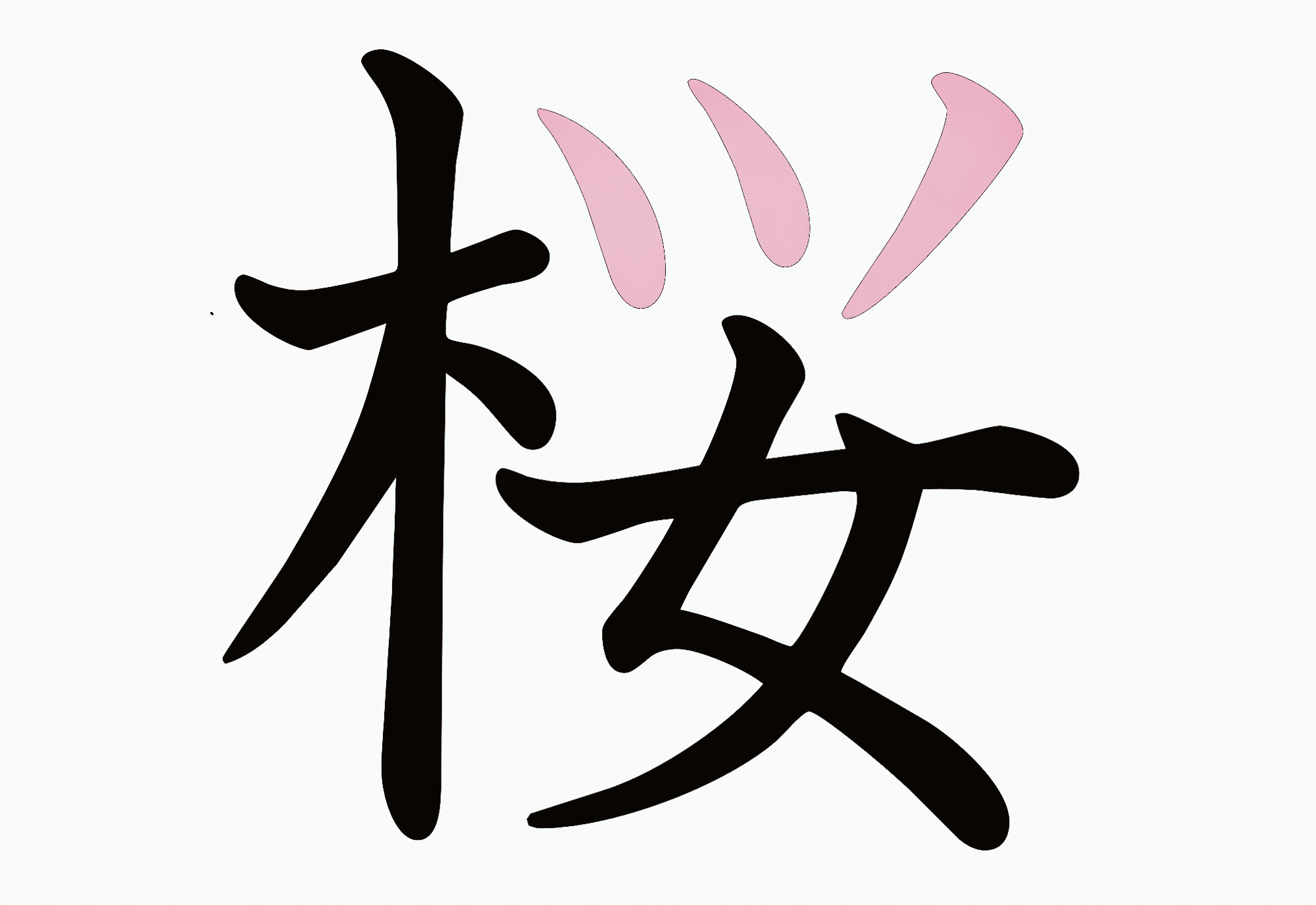
photo credits: appareassociazione.blogspot.com
This is the image that could be drawn - certainly the one I see - by observing the ideogram of "sakura". This is far from being the explanation why the kanji 桜 has this specific form, but it lends itself well to such an interpretation. Especially given its present simplified form. Before leaving us, we cannot conclude without a parenthesis on the writing and the cherry tree kanji.
As you can see in the picture above, Sakura's ideogram 桜 is composed on the left of the radical 木 (=tree), on the right of three dashes with the character 女 (=woman) below. The little part in pink, tell the truth: doesn't it really resemble the petals of a flower?
Actually, this part used to be written in a more elaborate way and had nothing to do with the meaning. It was written like this: 櫻. Later on, it underwent a process of simplification, like so many other ideograms in both Japan and China (where they come from). Bearing in mind that ideograms derive from pictograms, let us observe our character in its transition from pictogram to ideogram in the images below.

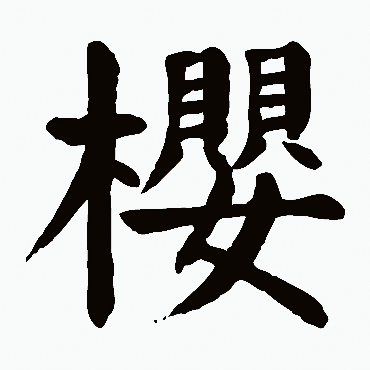
photo credits: shufam.hao86.com, shufa.m.supfree.net
This was its transition, and then in more modern times it changed exactly as follows: 櫻 🡪 桜 (in China it became 🡪 樱 ). The double 貝貝, which preceded the present three hyphens, indicated "necklace"; while the single 貝 still means "shell". So you see how, by investigating the Chinese etymology, the real historical evolution is revealed. Be careful, however, because the whole right-hand side (i.e. 嬰) of the ideogram 櫻 has reason to be there solely for a phonetic reason. (Not for reasons of meaning, which is also different between Chinese and Japanese). That is, that part has been "put" there to give the pronunciation to the kanji 櫻 as a whole.
But beyond this brief digression, we still like to see it like this: like a little woman under a flowering tree. Right? Since we are dealing with the simplified character today, we can safely indulge in this reading of the kanji which, coincidentally, is very reminiscent of the image of a woman under the blossoming cherry trees. And it certainly helps a lot to remember the ideogram. After all, this flower also recalls femininity. It is no coincidence that Sakura, or the variant Sakurako (桜子or 櫻子), are quite common female names in Japan.
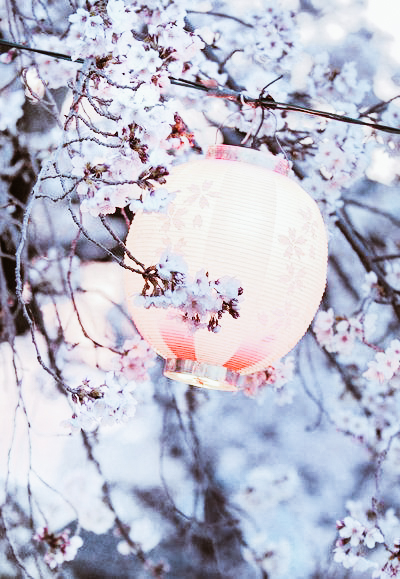
photo credits: pinterest.it
Japan History: Azai Nagamasa
Azai Nagamasa (1545 - 26 September 1573) was a Japanese daimyō, son of Azai Hisamasa, from whom he inherited the leadership of the clan in 1560 when Hisamasa was forced to step down in favour of his son.
Azai Nagamasa, the head of the clan Azai
Autore: SaiKaiAngel
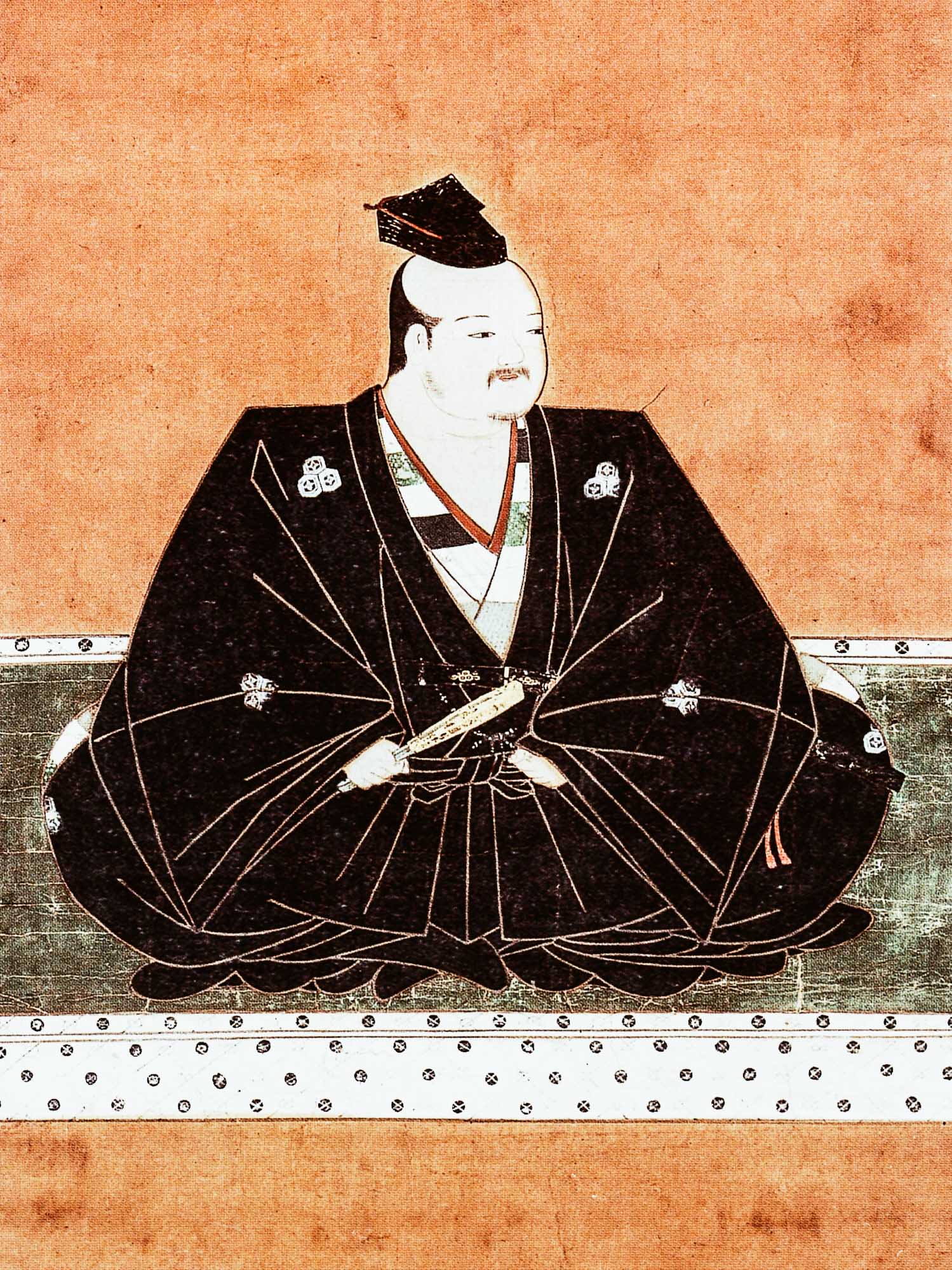
photo credits: wikipedia.org
Nagamasa became one of Nobunaga's enemies in 1570 due to the Azai's alliance with the Asakura clan, fighting against him in important battles including the Battle of Anegawa. Nagamasa and his clan were destroyed by Nobunaga in August 1573, and he committed seppuku during the siege of Odani Castle.
Conflict with Oda Nobunaga
Not only the arch-enemy of Oda Nobunaga, Azai Nagamasa also became his brother-in-law, as he married his sister Oichi in 1564. Oda Nobunaga sought to establish relations with the Azai clan because of their strategic position between the lands of the Oda clan and the capital, Kyoto.
The great conflict began when in 1570, Oda Nobunaga declared war on the Asakura family by besieging Kanegasaki castle. The Asakura and the Azai had been allies since ancient times. In this war, contrary to many who wanted to honour the alliance with the Asakuras, Nagamasa preferred to remain neutral, siding with Nobunaga. In the end, the Azai clan chose to honour their ancient alliance with the Asakura and came to their aid. Therefore Nobunaga's army, which was marching on the Asakura lands, retreated towards Kyoto. However, within a few months Nobunaga's forces were on the march again, but this time they marched on the Azai lands.
The Battle of Anegawa
In the summer of 1570, Oda Nobunaga returned to attack with Tokugawa Ieyasu and an army of around 30,000 men in Omi province against the Azai and Asakura. The Battle of Anegawa took place on two fronts, Oda against Azai, Tokugawa against Asakura. Although outnumbered, Nagamasa's troops managed to hold off the Oda troops and it seemed as if victory was assured, but when Tokugawa Ieyasu came to Nobunaga's aid after defeating the Asakuras, the situation was reversed.
Death
Over the next two years the Azai were under constant attack from the Oda, who came to besiege the castle of the capital, Odani in 1573 in the famous Siege of Odani. It is during this period that the Azai are seen to be loosely aligned with numerous anti-Oda forces, including the Asakura, Miyoshi, Rokkaku and various religious complexes.
With no way out, Nagamasa carried out seppuku in August 157e along with his father Hisamasa, sending Oichi and his three daughters to Nobunaga who decided to spare them. This did not happen with Nagamasa's only male heir, Manpukumaru, who was executed by General Toyotomi Hideyoshi on Nobunaga's orders.
Oda Nobunaga made sure that his sister, Oichi, was not informed of this, but she eventually came to this suspicion.
It seems that Nobunaga harboured a strong grudge against Nagamasa because of his alleged treachery, although it was he who broke the agreement first. It is also said that Nobunaga had the skulls of Nagamasa, Hisamasa and the Asakura chief lacquered so that they could be used as mugs, but this fact is not only not historically accurate, but could also be invented to further discredit Nobunaga's reputation.

photo credits: wikipedia.org
It should be added that Nagamasa's three daughters were of great importance, starting with the fact that they married very famous men:
- Chacha, or Yodo dono, was the second wife of Toyotomi Hideyoshi and mother of his heir Hideyori.
- Hatsu, married daimyo Kyōgoku Takatsugu.
- Oeyo, or Sūgen'in, was the wife of the second Tokugawa shōgun, Hidetada, and mother of his successor Iemitsu.
Samurai flags at the Tokyo Olympics
Samurai are still very respectable and important figures, so as the Tokyo Olympics approach, a content producer is hoping to spark greater understanding between nations with anime characters wearing traditional Japanese clothing.
Flags of countries revised as samurai for Olympics
Author: SaiKaiAngel | Source: The Japan Times
Kama Yamamoto along with other artists launched World Flags in 2018 with the idea of helping people around the world become familiar with their cultures in a fun way and says, "I want the project to be recognised globally as something that can unite the world through anime and samurai."
Yamamoto's idea is to use characters in samurai or traditional Japanese clothing to illustrate different nations, their flags and increase interest in Japan.
Here are some examples:
the Peruvian character Vargas is depicted as a ninja in red and white carrying a leaf-shaped kunai and, in the case of Chile, the condor, which is the national bird, is perched on the shoulder of a samurai, while the Canadian character wears a red and white kimono with a maple leaf on its sleeve.
Yamada says a lot of work is underway to get the initiative officially recognised by the Tokyo Games organisers.
Yamamoto's background is in educational personification books; he has drawn manga characters to represent jobs ranging from tapioca shop owners to web designers. The books are aimed at children and include information on average salaries and what it entails to better inform children about the choices available to them when they grow up.

photo credits: The Japan Times
The educational purpose remains with World Flags.
There were about 80 characters on the website at the beginning of December, according to marketing producer at Digital Entertainment Asset Hiroshi Tsuruoka. The site is regularly updated with new personified flags.
Characters are introduced on the project's official Twitter page as soon as they are ready. With over 15,000 followers, the page also boasts fan art posted by those inspired by the characters.
However, characters can undergo both physical and "personality" changes in line with advice or criticism from people around the world, helping them to become more suited to the country concerned.
In one case, the Spanish flag, whose character is called Iniesta, was initially portrayed as a bullfighter, but was later transformed into a flamenco dancer following criticism that bullfighting was a controversial topic in the country.
The project got what Yamada called its first "big break" in the summer of 2019, when the Chinese flag depicting Aaron was widely shared online. Yamamoto soon began receiving interview offers from Chinese media, along with offers to create a range of merchandise e.g. mouse pads that are currently available online.
The characters are illustrated by a group of artists brought on board by Yamamoto, many from his previous projects.
"Some of the illustrations are by full-time artists, but others are drawn by people ranging from housewives to vets who draw as a hobby," he says. The flags are assigned by Yamamoto, who brainstorms a rough idea of the character design, to individual artists based on their illustration styles.

photo credits: The Japan Times
While Yamamoto works to finish personifying all the countries, a number of people from smaller nations have expressed delight at finding their respective flags in samurai form.
Some, including Mexico and Venezuela, have even received framed images of their personified flags at their respective embassies in Tokyo.
"We believe that an anime-style character representing Mexico can be an ideal way to convey the long-standing friendship that exists between the Mexican and Japanese people," Emmanuel Trinidad, the cultural affairs adviser at the Mexican embassy in Tokyo, said in an email.
"Every comment received about it on social media seems to praise the fact that the work goes beyond any stereotypical image and instead presents a fresh and more modern approach to the characters representing the countries in general."
The project was first published as a book last year, with illustrations of the characters and information ranging from national demographics to the number of Olympic medals won by the nation in question.
They would also like to turn it into an anime or superhero movie in the future, with the characters joining forces to fight an enemy to save the world.
"The story will not have a protagonist, and all the characters will work together for a common goal," says Yamada.
Yamamoto initially hoped to complete the project in 2020 ahead of the Olympic Games before they were postponed due to the new coronavirus pandemic. Now he is aiming to present around 200 personified flags by the end of this year. will he be able to achieve his goal of uniting countries with Japan? we are sure he will. Let's look forward to it and enjoy these works in the meantime!
Japan History: Asakura Yoshikage
Asakura Yoshikage (12 October 1533 - 16 September 1573) was a Japanese daimyō of the Sengoku period (1467-1603) who ruled a part of Echizen province.
Asakura Yoshikage, head of the Asakura clan
Author: SaiKaiAngel
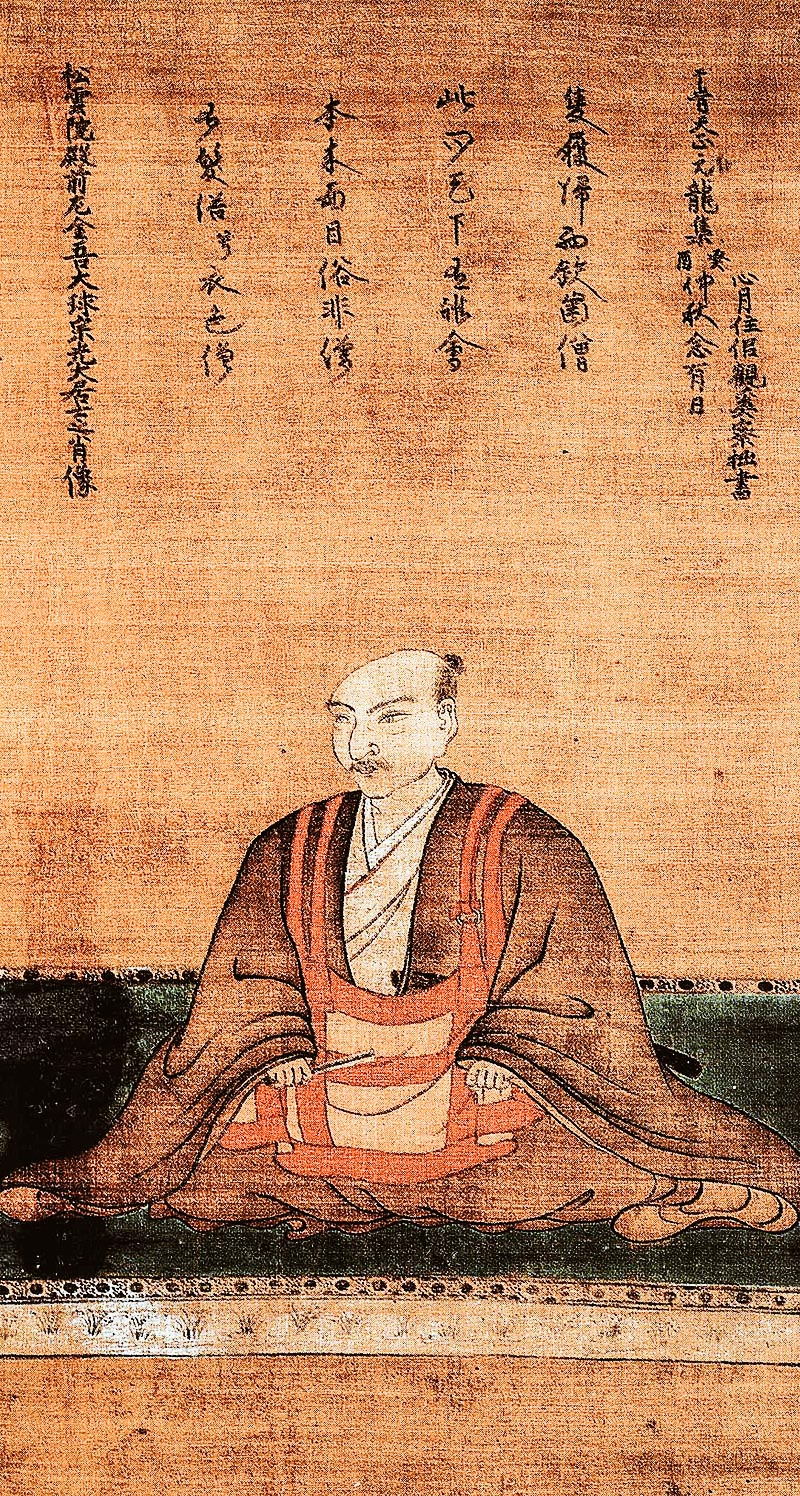
photo credits: wikipedia.org
Asakura Yoshikage was born in the Ichijōdani castle of the Asakura clan in Echizen province. His father was Asakura Takakage and his mother seems to have been the daughter of Takeda Motomitsu.
Yoshikage succeeded his father as head of the Asakura clan and lord of Ichijōdani Castle in 1548, demonstrating great skill in political and diplomatic management, especially through his negotiations with the Ikkō-ikki at Echizen. Thanks to them, Echizen enjoyed a period of relative peace compared to the rest of Sengoku-period Japan, becoming a place for refugees fleeing violence in the Kansai region. Ichijōdani even became a centre of culture modelled on the capital of Kyōto.
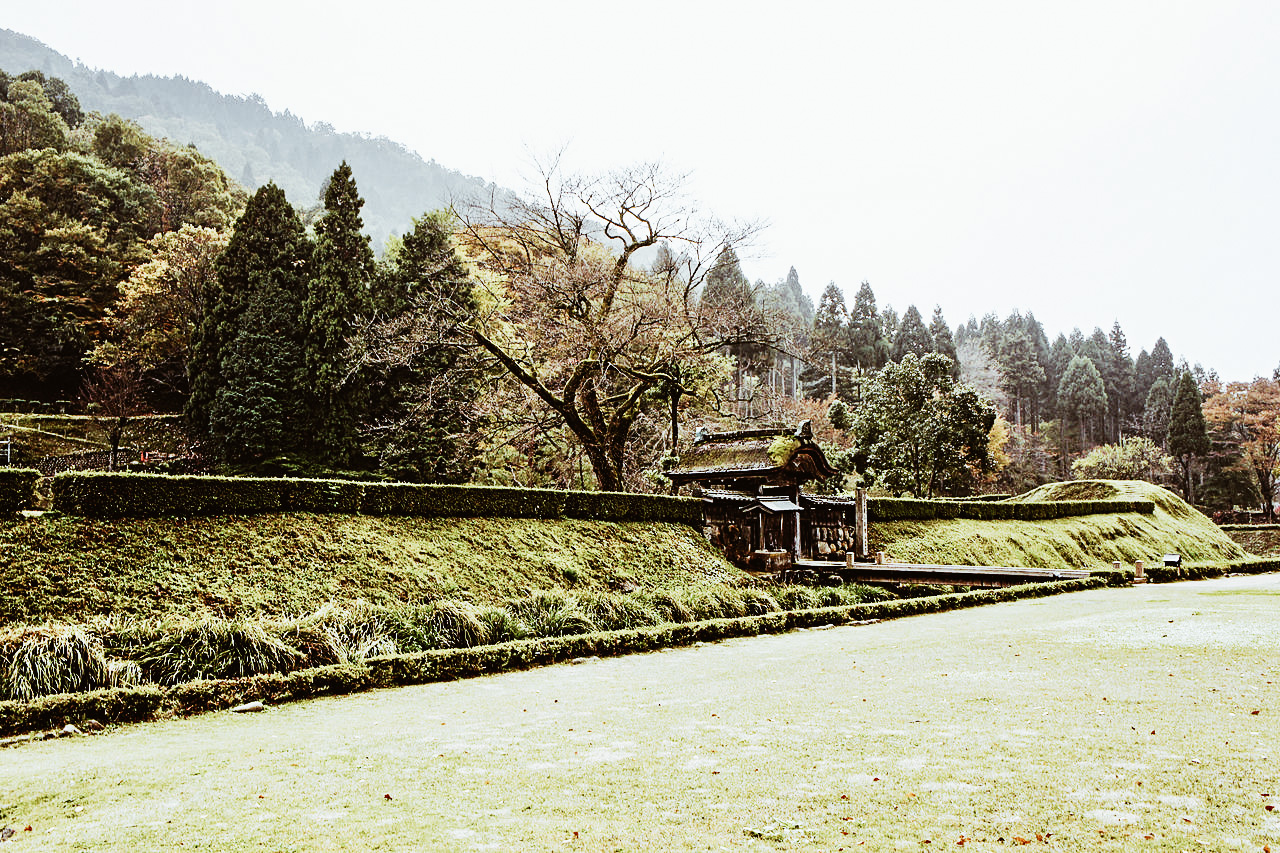
Ichijōdani Asakura Family Rovine storiche | photo credits: wikipedia.org
Conflicts with Oda Nobunaga
After his capture in 1568, Ashikaga Yoshiaki appointed Yoshikage as regent and enlisted the help of the Asakuras to drive Nobunaga from the capital. In 1570, Oda Nobunaga then invaded Echizen and succeeded in invading the castle due to Yoshikage's lack of military skill. Azai Nagamasa, Yoshikage's brother-in-law, attacked Nobunaga with the Asakuras at Kanegasaki, but Nobunaga withdrew his troops and managed not to be captured. At the Battle of Anegawa, Yoshikage and Nagamasa were defeated by the superior forces of the Oda and Tokugawa clans led by Nobunaga and Ieyasu.
Death
Yoshikage fled to Hiezan after the battle and attempted to reconcile with Nobunaga, which enabled him to avoid conflict for three years. In 1573, during the siege of Ichijodani Castle, Yoshikage was betrayed by his cousin, Asakura Kageaki, and was forced to commit seppuku at the age of 39. His death also destroyed the Asakura clan.
5 must-see destinations for 2021
We all need to feel free again, why not do it as soon as everything ends with special destination Japan? We are called Japan Italy Bridge, obviously we love Japan, but we recommend it to everyone. Those who have been there will want to return, those who haven’t are dreaming of going there.
The 5 destinations in Japan not to be missed according to Japan Italy Bridge
Author: SaiKaiAngel
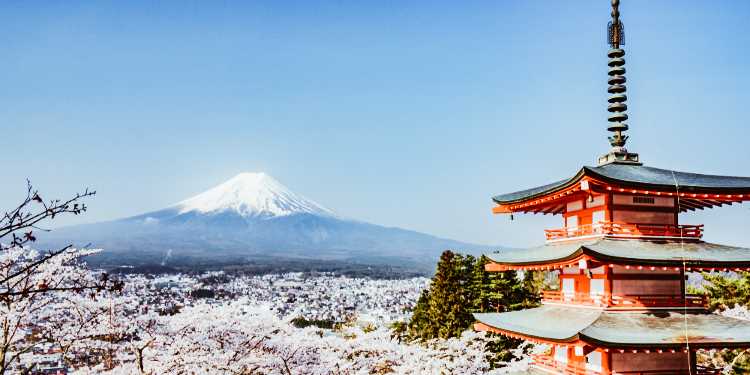
photo credits: expat.com
Japan should be seen and experienced, because each of its smallest part can give us something unique, can enrich us with experience and tradition, if you rely on the experts of JNTO you can go on the safe side! Japan is not only an unmissable destination, but it’s also completely safe, with all its attentions and precautions. With JNTO you will always be guaranteed the right distance, temperature detection in stores and places of interest, protections such as the mask. Safe, reliable and... absolutely dreamy.
You surely know the usual cities to visit, but this time we would like to show you other places that we particularly like. Are you ready? Start packing your bags for your dreamy and safe travels!
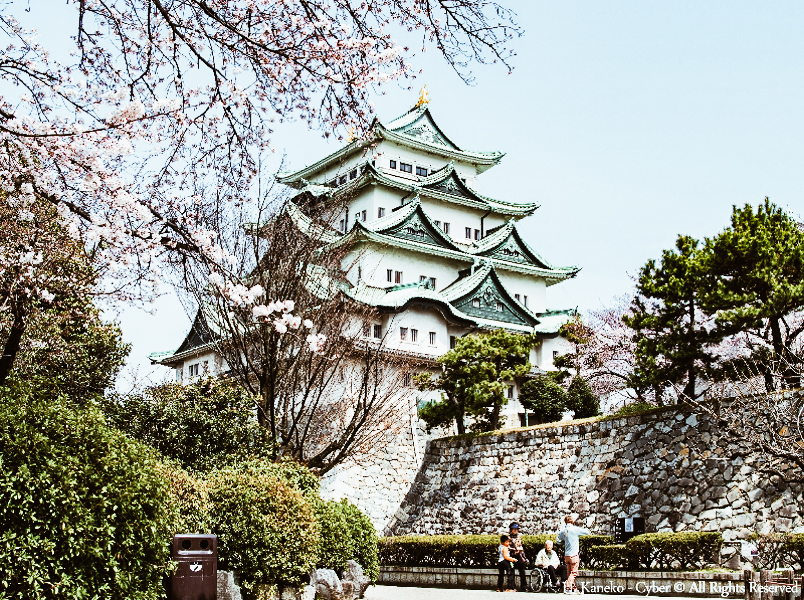
photo credits: viahero.com
Nagoya
Nagoya is a city in the Chūbu region of Honshū Island in Japan, with a port on the Pacific Ocean and two airports, including the new Chūbu-Centrair International Airport, which opened on February 17, 2005.
What to see in Nagoya
First and foremost, we believe the Atsuta Shrine is the most important. This shrine, founded over 1900 years ago is one of the oldest Shinto shrines in Japan. Here, for is kept the sword Kusanagi no tsurugi, one of the Three Sacred Treasures of Japan. This treasure, however, is not on display, but visible only to the emperor and a few monks. The shrine is located in a very serene forest to visit to relax.
Also, not to be missed is Nagoya Castle which was the residence of the Owari branch of the Tokugawa family, built in 1612 by order of Tokugawa Ieyasu. In spring and autumn, you can find a variety of flowers and plants absolutely unique in the world, are you curious to see them?
The Tokugawa Museum of Art is now where the residence of the Owari branch of the Tokugawa family once stood and collects and displays some of the family's great artistic heritage. The collection includes samurai swords and armour, costumes, tea ceremony utensils, books, maps and scrolls from the Genji Monogatari. Near the museum is a beautiful Japanese garden, the Tokugawa-en.
Osu Kannon Temple, on the other hand, is a Buddhist temple located in the centre of Nagoya. The temple houses a rich collection of ancient Japanese and Chinese texts.
Nagoya is home to very important museums, including The Railway Museum that exhibits ancient steam locomotives including the legendary C62 portrayed in the anime Galaxy Express 99 and the Toyota Museum of Industry and Technology that traces the evolution of manufacturing processes and aspects of industrial technology.
Kobe
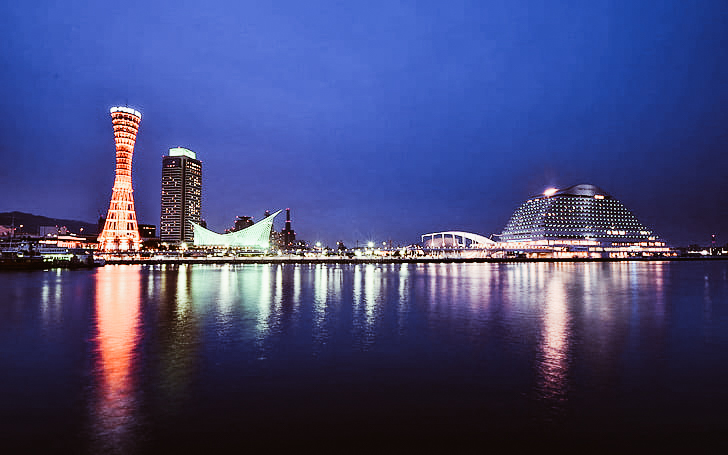
photo credits: wallpaperflare.com
Kōbe is located on the island of Honshū. For about six months in 1180, it was the capital of Japan, when Emperor Antoku moved to Fukuhara kyō, which was located in today's Hyōgo-ku city district.
What to see in Kobe
A place not to be missed and enjoyed completely is the Shin-Kobe and Nunobiki Herb Garden Cable Car that starts near Shin-Kobe Station. On the way up, you'll pass by the Nunobiki Waterfall and Nunobiki Herb Garden but the focal point of the ride is at the observation deck located right next to the top station, which offers spectacular views of Kobe both day and night.
Also take a trip to Sorakuen Garden which was part of the residence of Kodera Kenkichi, former mayor of Kobe opened to the public in 1941.
Nostalgia for parks? Meriken Park is a mix of nature and modernity. Along with the greenery, you can range up to a collection of modern art installations. In this park, you can find the red harbour tower and the Maritime Museum.
The Kobe Museum was opened in 1982, with collections from the Kobe Archaeological Museum and the Namban Museum of the Arts. The museum's permanent exhibition offers a collection of maps from different regions and eras of Japan, as well as artefacts representing Japan's trade with foreign countries.
You can't leave Kobe before making more than a quick trip to the Arima Onsen, a famous spa town in a natural mountain setting. Your relaxation is assured!
Delight your senses, delight your eyes as well at the Akashi Kaikyo Bridge. At over 4 km long, it is the longest suspension bridge in the World. The bridge connects the island of Honshu to the island of Awaji.
In Kobe, we find a museum not to be missed, the Earthquake Museum. On January 17, 1995, at 05:46, the city of Kobe was hit by the Great Hanshin Awaji Earthquake, causing the death of over 5000 people and the destruction of tens of thousands of homes.
The museum, which opened as a memorial in 2002, includes a large theatre with a screen that plays realistic images of the earthquake's brutality, and various interactive games on disaster prevention.
To end our visit to Kobe, let's enjoy a visit to the Sake Distillery! The Nada district in Kobe is the major sake production site in the region, due to its good availability of high-quality rice, suitable water, and favourable weather conditions for producing the alcoholic beverage.
Sapporo
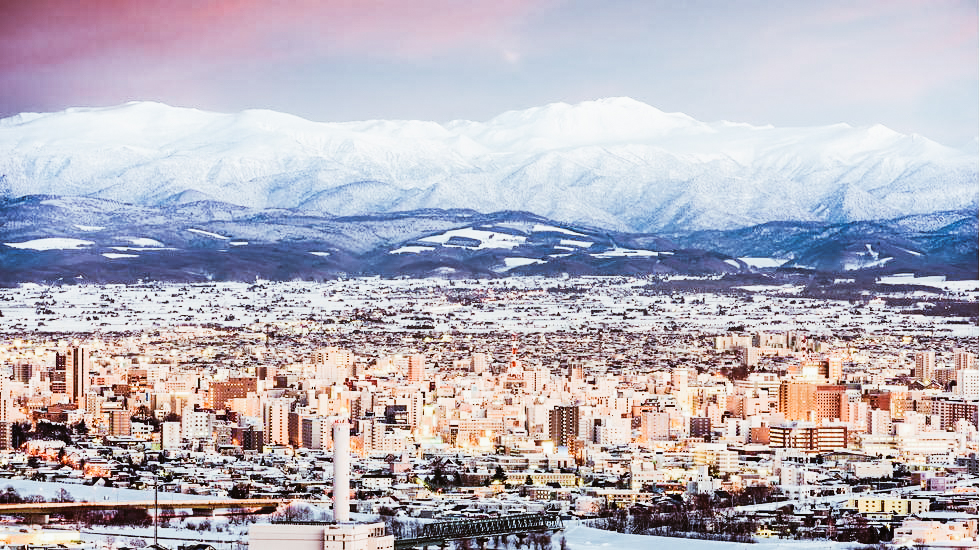
photo credits: suitcasemag.com/
Sapporo is a Japanese city, capital of the Hokkaidō prefecture, located in the southwestern part of the island of Hokkaidō, known for hosting the 1972 Winter Olympics, the first held in Asia, and for the famous Snow Festival that attracts over 2 million tourists from all over the world.
What to see in Sapporo
The historic village of Hokkaido
Of course, we start with the Hokkaido Historical Village, which is an open-air museum. 60 buildings from the past with various sections including towns and villages Don't miss these moments!
Instead, ìthe Sapporo Snow Festival (Sapporo Yuki Matsuri) takes place every February in Sapporo for a week. Born in 1950 when high school students started building snow statues in Odori Park, it is now a big event with spectacular snow and ice sculptures that attracts millions of visitors every year. In contrast, the Okurayama Observatory originated from the 90-meter ski jump used in the 1972 Winter Olympics! A must-see attraction, right in the Okurayama Ski Jump Stadium.
Want to relax after a long walk? Here for you is Moerenuma Park which is a park in the northeast of Sapporo surrounded by a swamp, a unique place that you definitely can't miss.
Here we are at the Hokkaido Historical Museum which documents the history of Hokkaido's development. You can find and see, in chronological order, the entire history of the prefecture from 20,000 years ago, to the post-war years after 1945.
Hungry? Shiroi Koibito Park is a chocolate company. Have you ever tried the Shiroi Koibito cookie? In case you've never tried it, it's two thin butter cookies with a layer of white chocolate in between. This is one of the top souvenirs in Hokkaido!
Thirsty? After chocolate, a good beer suits us perfectly, so we recommend the Sapporo Beer Museum.
In Japan beer was born in Hokkaido in fact, Sapporo is one of the oldest and most popular brands in the country. This beer is produced, precisely in Sapporo, in 1877 and is famous throughout the world, you will have happened to find it in restaurants here in Italy! The museum will show you the production process of beer and not only that! You can end the visit with a unique tasting!
Our visit ends in relaxation in the Botanical Garden that has a mainly didactic purpose, apart from being a pleasant break for visitors. In our opinion absolutely not to be missed, especially if you are looking for a moment of peace during the excursions and visits.
Kamakura
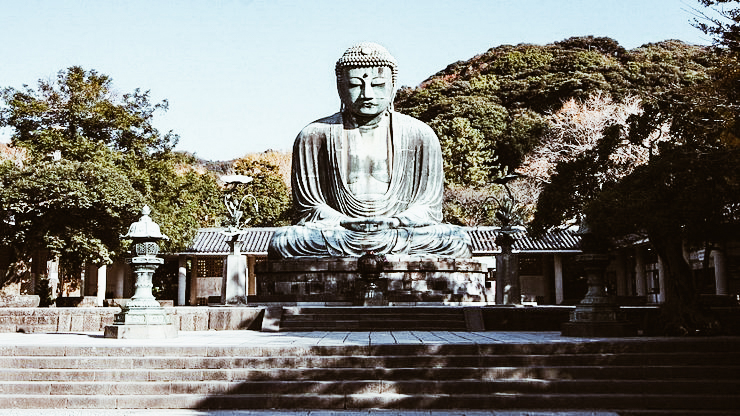
photo credits: japan-guide.com
This is a very important place that we at Japan Italy Bridge absolutely recommend. We are talking about Kamakura, a tourist and also seaside resort easily accessible from Tokyo. If you need a moment of relaxation during your trip to Japan, you can count on Kamakura.
Just think that Kamakura is facing the ocean, with its beach about 2 km long that takes two different names, Yuigahama Beach and Zaimokuza Beach. All around are hills and forests, crisscrossed by various trails. Among these is the Daibutsu path that leads from the great buddha to the Kita-Kamakura station, the Genjiyama path that starts from the Jufukuji temple and connects to the Daibutsu path, about at the height of the Zeniarai Benten temple, the Gionyama path near the Myohonji temple and the long Tenen path that connects the Kenchoji temple to the Zuisenji and Jomyoji temples.
During the Heian period it was the capital of the Kantō region and in 1192 the shogun Minamoto no Yoritomo moved his new capital here, transforming Kamakura din a real political centre of Japan.
What to see in Kamakura?
Kamakura is mainly known for its temples and altars and the one that we loved the most perhaps because of the bond that we feel towards this family of Samurai, is the shrine Tsurugaoka Hachimangu. The shrine is dedicated to Hachiman, the patron god of the Minamoto family and Samurai in general. On a terrace at the top of a staircase you can find the main hall with a small shrine museum, which displays various treasures such as swords, masks and documents. Next to this grand staircase, you could find a beautiful gingko tree that delighted visitors' eyes with its golden color every autumn, which unfortunately did not withstand a storm in 2010. Before entering the staircase, you can find the Maiden, a stage for dance and music performances.
The large statue of Amida Buddha, on the other hand, is located in the Kōtoku-in temple and is the most important statue in the country. Think that the temple in which it was located was destroyed during a tsunami in the fifteenth century, but the statue resisted and since then it is outdoors. The town is also home to the tombs of Minamoto no Yoritomo and Hōjō Masako. Engakuji Temple is one of the main Zen temples in eastern Japan, founded by the ruling regent Hojo Tokimune in the year 1282.
We move on to Hasedera Temple famous for its eleven-headed statue of Kannon, the 9.18-meter-tall goddess of mercy. The Kannon museum displays some of the temple's treasures, including Buddhist statues, the temple bell and a scroll. Also beautiful is the location of this temple, built along a wooded hillside quilted with small lakes.
As we said, Kamakura is the place of temples and shrines, so we point out other names to visit: Kenchoji, The Zeniarai Benten (very important for tradition if you want to wash your money!) and Zuisenji.
Obviously, there are restaurants where you can taste the delicacies of the place.
Hakone

photo credits: gaijinpot.com
Another must-see destination in Japan, in our opinion, is Hakone. Easily accessible from Tokyo, it is a place that can offer you not only relaxation, but also unmissable experiences. Here is our virtual tour of Hakone!
What to see in Hakone
The first thing to see is definitely Lake Ashi. We left our hearts on that lake and the panoramic view of Mount Fuji in the background. A real picture that you will carry inside you for a lifetime. This picture is among other things one of the hallmarks of Hakone. To experience Lake Ashi in all its beauty, you can cross it thanks to three vessels inspired by the ships of the eighteenth and seventeenth centuries. Special views, the important ports of Hakone, Machi and Porto Moto will make your moments unforgettable and you will feel part of that unique picture.
Always in the name of relaxation, remember that Hakone is the city of Onsen or hot springs. Today of the wonderful thermal centres, these Onsen will offer you the heavenly moment of relaxation, pampering all your senses. The Yumoto spring is the oldest and is located near Odawara. You are spoiled for choice, among the names we recommend is definitely Hakone Kamon, with its pools made externally of wood and stone.
After relaxing, it's time to visit the Hakone Shrine, Hakone Jinja which is located right on the shores of Lake Ashi. It consists of many buildings scattered in the forest, with a staircase embellished with lanterns that will make the walk a fairy tale.
Let's move on to the wonderful Odawara Castle built in the mid-fifteenth century in the hands of the Hojo Clan. We are in 1950 when Toyotomi Hydeyoshi defeated the Hojo Clan and reunited Japan. This castle is rich in history, three stories high seen from the outside and four inside. Inside the castle, you can see valuable period furnishings, armour and other items of historical interest and if you really want to enjoy a spectacular view, look at the whole city from the other in the highest floors! For Museum lovers, here is the Odawara Castle Historical Museum, with a very interesting interactive exhibition of objects related to the history of the castle.
On the other hand, the Gora Park is a French-style park with a large fountain, a rose garden and two greenhouses with tropical plants and flowers, a restaurant, a tea room and a Craft house, where you can try various workshops such as pottery making, glass blowing and ikebana composing.
After all that, what to do to extend your life? I'm not kidding, but I'm talking about Owakudani's black eggs. We are in a volcanic area famous for kuro tamago chicken eggs made black by cooking in hot springs. According to Japanese tradition, if you eat kuro tamago you will extend your life by 7 years! You will find them only in Owakudani!
Viaggiare il Giappone in sicurezza
Obviously, these are just some of the places that we propose, but Japan should be seen all. Each temple, each shrine, each garden is a world unto itself, something that cannot be found in other parts of the world. If you want to experience many different worlds in one place, you can't do without Japan. Thanks to JNTO, you can have a personalized and safe trip! With JNTO, especially in this moment of pandemic for COVID-19, you can explore Japan in absolute safety, visit the places you love without fear and in complete tranquillity. We like to repeat that with JNTO will always be guaranteed the right distance, temperature detection in stores and places of interest, protections such as the mask. Safety first and no risk, to enjoy a trip with a capital V do not be afraid and rely on JNTO! We have done it several times and we can assure you that the experience will be not only unforgettable but also in complete safety!
Also in collaboration with JNTO, don't forget the Hiroshima Hakken menu at TENOHA Milanoa! While waiting to leave, you can enjoy Hiroshima's specialties with this special TENOHA menu sponsored by JNTO Japanese National Tourist Board! This special menu that, with its sake tasting, will keep you company throughout January! The best sake in Hiroshima is here!

Night Emperor, Honshu ichi, Zoka, Itteki Nyukon, Sempuku Shinriki are the sake from Hiroshima that will remain available for you all January with the Sake Tasting! Here are their characteristics:
Honshu ichi
Night Emperor, Honshu ichi, Zoka, Itteki Nyukon, Sempuku Shinriki are the sake from Hiroshima that will remain available for you all January with the Sake Tasting! Here are their characteristics:
‘Zoka’
Junmai Daiginjo is made from "Yamada Nishiki" sake rice grown in a field located about 6 km north of the brewery, using Saijo underground water and the Hiroshima Mori technique. The delicate aroma and sweetness of the transparent and gentle rice harmonize perfectly with the fresh acidity. You can enjoy it cooled with a thin cup or glass of wine. Sake certified with Saijo JAPAN brand)
Itteki Nyukon
This sake has as first material the rice suitable for its preparation. A slightly dry Junmai Ginjo sake that goes well with foods with the right acidity, good both cold and hot.
Sempuku Shinriki 【Nickname】Filled with happiness
Kamiriki rice, which is the origin of Chifuku, is 85% processed and is close to the processing speed of rice from the Meiji and Taisho eras. A bottle full of feelings for the preparation of sake, especially suitable for people who particularly care about Japanese sake.
Night Emperor
Night Emperor is a mixed Hachitan Nishiki based liqueur produced in Hiroshima Prefecture. Versatile liqueur is easy to combine with any dish. Soft taste that takes advantage of the characteristics of fresh water preparation and keeps the alcohol content low while maintaining the taste of koji and rice. Good tasted both cold and hot.
Start planning your trip to Japan and while you're doing it, enjoy the special Hakken of Hiroshima at TENOHA Milano for the whole of January! As you can see, JNTO is close to you at all times, reminding you that Japan is a destination that will give you all the security you are looking for!
Japan History: Ankokuji Ekei
Although Ankokuji Ekei (1539 - November 6, 1600) was a member of the Aki Takeda clan, his year of birth and his father are still uncertain. His year of birth varies from 1537 to 1539 and whether his father could have been Takeda Nobushige or Takeda Shigekiyo.
Ankokuji Ekei, samurai, monk and diplomat
Author: SaiKaiAngel
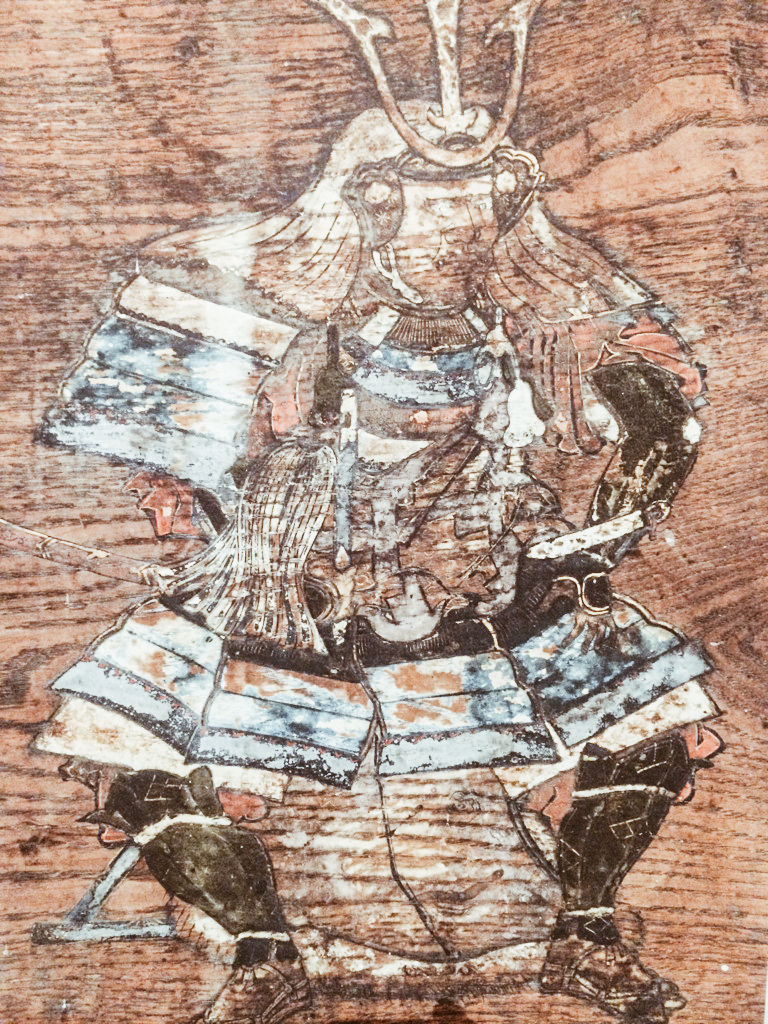
photo credits: samurai-world.com
When the Aki Takeda were destroyed in 1541 by Mori Motonari, Ankokuji Ekei was taken to a safe place in the temple of Ankokuji, which was located in the province of Aki.
At that time, Ankokuji Ekei changed his life becoming a Rinzai Buddhist monk and also a diplomat of the Mōri clan. It was the year 1585 when Toyotomi Hideyoshi praised his negotiations when the Mori clan formally served Hideyoshi. As Hideyoshi's advisor, he even received a feud of 23,000 koku in Iyo province as a reward after the invasion of Shikoku (1585).
In 1586, after the Kyushu Campaign, his possessions were expanded to 60,000 koku. He participated in the war of Imjin, the Siege of Shimoda and lost the battle of Uiryong against Gwak Jae-u.
Despite being a great priest, Ekei led the men for both Hideyoshi and Môri Terumoto. Ankokuji Ekei was present at the Siege of Shimoda in the Odawara Campaign (1590) and in the Korean Campaigns (1592-93, 1597-98) in Terumoto's staff.
In 1600 Ekei joined Ishida Mitsunari and exerted considerable pressure on Môri Terumoto, eventually prevailing on the advice of Kikkawa Hiroie. In the battle of Sekigahara, Ekei commanded 1,800 men on Nangu Hill, positioned near the troops of Hiroie and Natsuka Masaie. When the main armies were engaged around the village of Sekigahara, Ekei and the troops of Môri (commanded by Môri Hidemoto) decided to enter the fray and waited for Hiroie, the vanguard of Môri, to move. Unbeknownst to them, Hiroie had negotiated a secret agreement with Ieyasu and had no intention of moving.
Ekei and the Tokugawas
Ekei and Natsuka had no intention of doing anything so the 25,000 soldiers under Môri command remained inactive. This inactivity sealed a defeat that became devastating after the betrayal of Kobayakawa Hieaki, and once the matter was clearly decided, Ekei and his comrades thought it was better to retreat in a hurry.
Ekei tried to flee to To-ji, but was captured according to legend by a rônin who had an old grudge against him. Tokugawa sentenced him to death on Kyoto's Rokujo-ga-hara, and was beheaded together with Konishi Yukinaga and Ishida Mitsunari.
Jidai Matsuri
The Jidai Matsuri ( 時代祭り, literally "The Festival of Historical Epochs"), celebrated in Kyoto on October 22 of each year. This festival represents a magnificent opportunity to experience over a thousand years of Japanese feudal history as direct spectators in a single day.
Jidai Matsuri, the Festival of Historical Epochs
Guest Author: Myriam

photo credits: travel-on.planet-muh.de
The origins
This festivity has its roots in the oldest history of Japan and recalls, through an impressive historical costume parade, the events and characters that have marked the life of the city since its foundation. It has been held since 794 by Emperor Kanmu (桓武天皇, Kanmu Tennō) until the transfer of the capital to Edo in 1868 by the decision of Emperor Mitsuhito.
Since its creation under the name of Heian Kyo (平安京, "capital of tranquillity and peace"), Kyoto has remained the capital of Japan almost uninterruptedly for over a thousand years. With the end of the Tokugawa Shogunate and the beginning of the Meiji Era, the entire imperial court was transferred to Edo, which became Tokyo (東京, literally "eastern capital").
In 1895 on the occasion of the 1100th anniversary of its foundation, the governments of the city and the prefecture of Kyoto established the Jidai Matsuri with the intention of restoring lustre to the ancient capital. Along with this, the aim was to honour the memory of the emperors Kanmu and Komei through the construction of the majestic Heian shrine.
A thousand years of history on the road
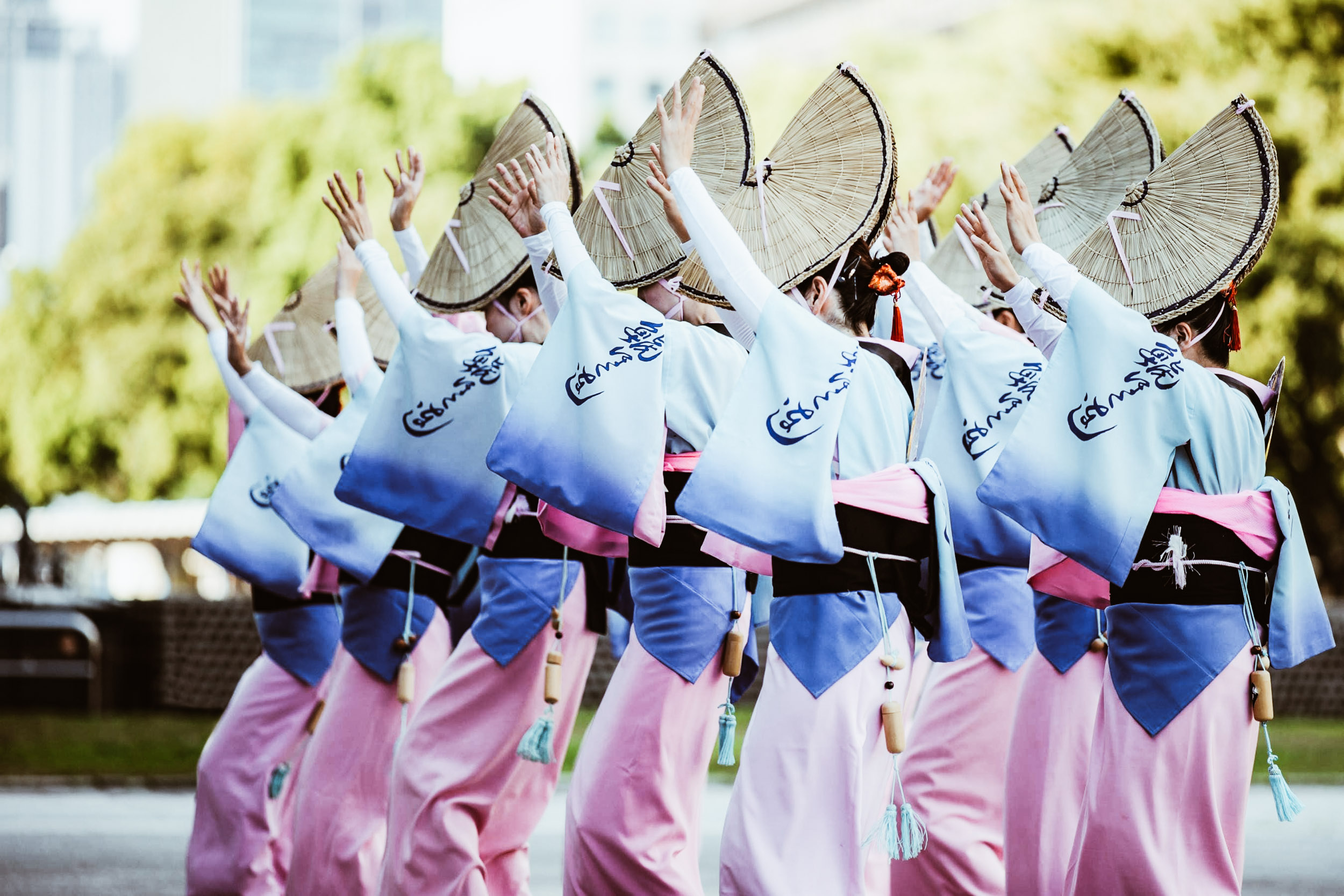
photo credits: fodors.com
Since then, on October 22 of each year, Jidai Matsuri brings back to life the splendour of feudal Japan. This allows residents and tourists to relive the life of the ancient capital for a few hours. Today, the main attraction of the festival is the Jidai Gyoretsu. It is a historical parade in which over two thousand participants take part, dressed in period costumes or in costumes meticulously reproduced by the craftsmen of Kyoto.
At the head of the parade are the mikoshi (portable sanctuaries) dedicated to the Kanmu and Komei emperors and the festival's honorary commissioners, on horse-drawn carriages in the style of the mid-19th century and from there the parade unfolds in reverse chronological order, from the Meiji Era to the Heian period, through about twenty thematic groups, which make it possible to rediscover, era after era, the characters who contributed to the history of the city, from simple peasants and soldiers to prestigious historical figures, such as the unifiers of the country Oda Nobunaga, Toyotomi Hideyoshi and Tokugawa Ieyasu, or figures of religious or cultural importance, such as Murasaki Shikibu, author of the famous "Genji Monogatari". The figures are accompanied by the music of drums and flutes, which together with the over 12,000 historical artefacts used, allow spectators to immerse themselves completely in the atmosphere of past eras.
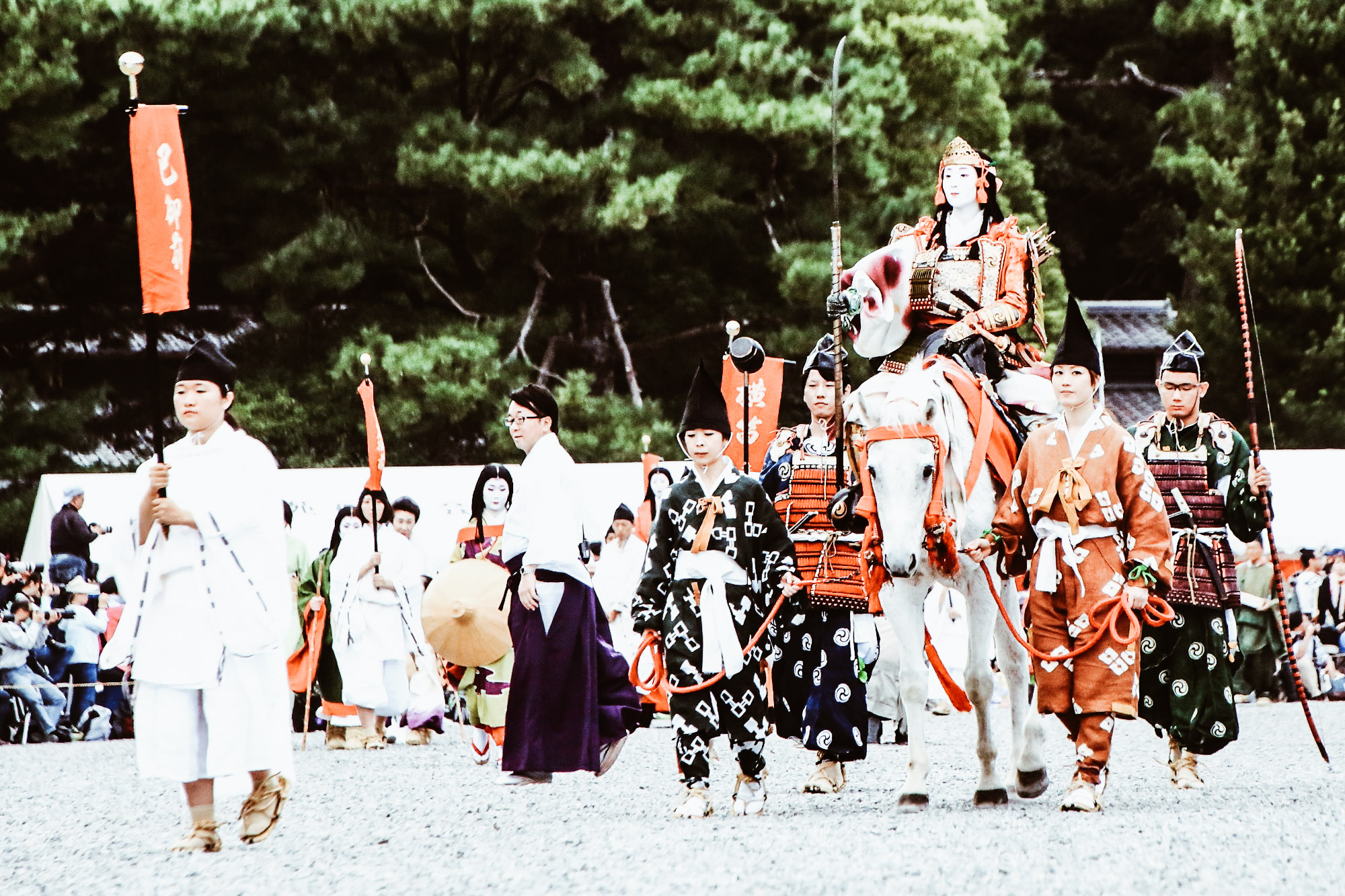
photo credits: blog.halal-navi.com
The long procession leaves at 12.00 noon from Kyoto Gosho, the imperial palace. It then winds for hours through the streets of the city centre, touching the most evocative and significant places. We see it passing by Oike and the Okazaki district, finally reaching the Heian Sanctuary. Here the Festival ends with the ceremonies foreseen by the Shinto rite.
Nada no Kenka Matsuri
From October 14th to 15th of each year, in the Matubata Hachiman Shrine (松原八幡神社) in the city of Shirahama in Himeji, Hyogo Prefecture, the Nada no Kenka Matsuri (灘のけんか祭り) one of the biggest autumn festivals in Japan is held.
Nada no Kenka Matsuri, Fighting for blessings
Author: Sara
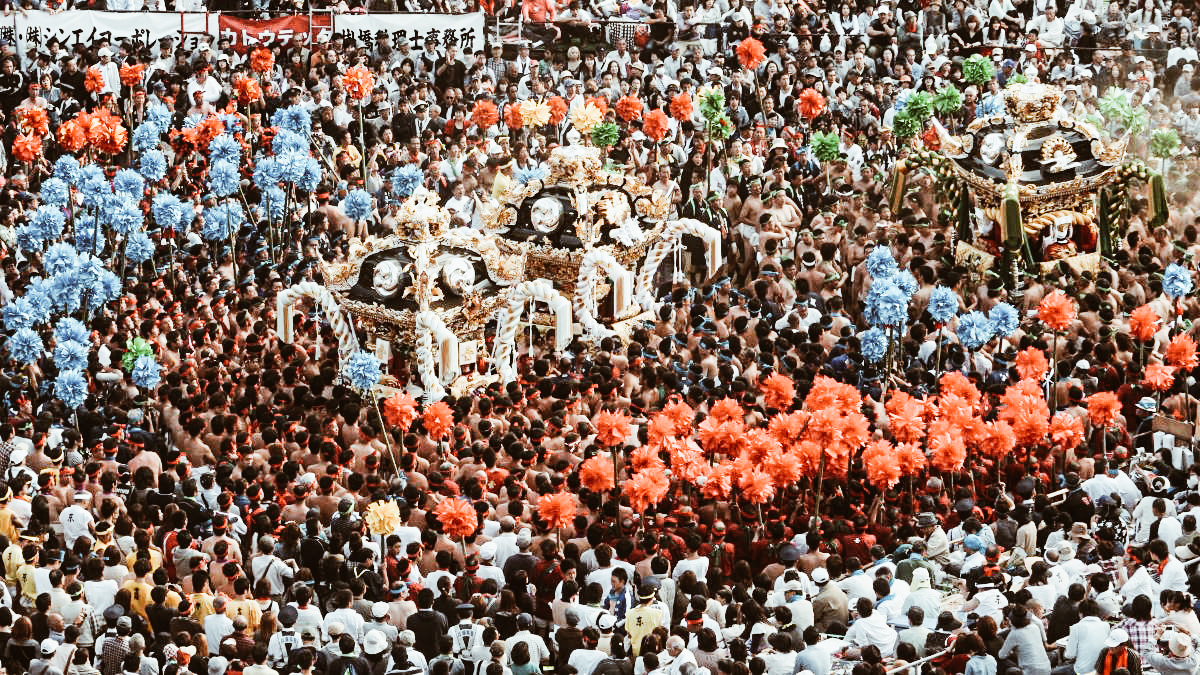
photo credits: armidaleexpress.com.au
The term "kenka"(けんか) contained in the name of the Festival means "to fight", for this reason, in the current language, it is defined as "the Festival of the fight" in which the Kami (the gods) will bless the winner of the fight with a good harvest. Given the impetuousness with which it takes place, only high school boys and men up to the age of 45 can participate in the event according to Shinto tradition. In addition, participants must belong to 7 specific villages: Higashiyama (東山), Kiba (木場), Matsubara (松原), Yaka (八家), Mega (妻鹿), Usazaki (宇佐崎), Nakamura (中村).
October 14: The Eve "Yoi-Miya" (宵宮)

photo credits: armidaleexpress.com.au
At 11:00 am everything is ready for the "Neri-dashi" parade (練りだし). The 7 Yatai (small sacred floats) from the 7 villages go to the Matubata Hachiman Shrine to receive the divine blessing, "Miya-Iri" (宮入). Here the Yatai compete in the first competition called "Neri-Awase" (練り合わせ), competing against each other. A sort of "preparation" because the real "fight" will take place the next day and will be even more difficult. At this point, the "Shishimai" takes place: a dragon dance in front of the elementary school of Shirahama.
October 15: Hon-Miya the heavy Yatai clash

photo credits: diversity-finder.net
The main event of the Festival starts at 5:00 am. The lion of the village of Matsubara (松原の獅子) celebrates the dragon dance at the Sanctuary to worship the gods. Afterwards, the ceremony moves to the ocean where the participants of the villages eliminate their impurities of the spirit by bathing in cold water (Osogi 禊). At this point, the Miya-Iri (opening ceremony) at the Matubata Hachiman Shrine is started with the blessing of the gods. At last, the thinking confrontation begins: the first are the 3 Mikoshi (the least expensive portable sanctuaries of the Yatai) of the village in charge of hosting the festival (every year the place changes alternating between the 7 villages).
The first Mikoshi (一の丸) is very heavy and is carried by men over 36 years old. The second (二の丸) is a bit lighter and is carried by men between 26 and 35 years old. The third Mikoshi (三の丸) is very light and is worn by men under 25 years old.
They fight each other twice (神輿合わせ, mikoshi-awase): first in front of the main building of the Sanctuary, then in the battlefield at the foot of Mount O-Tabi-Yama (御旅山). At the end of this clash, it is the Yatai's turn on the battlefield (Neri-awase 練り合わせ).
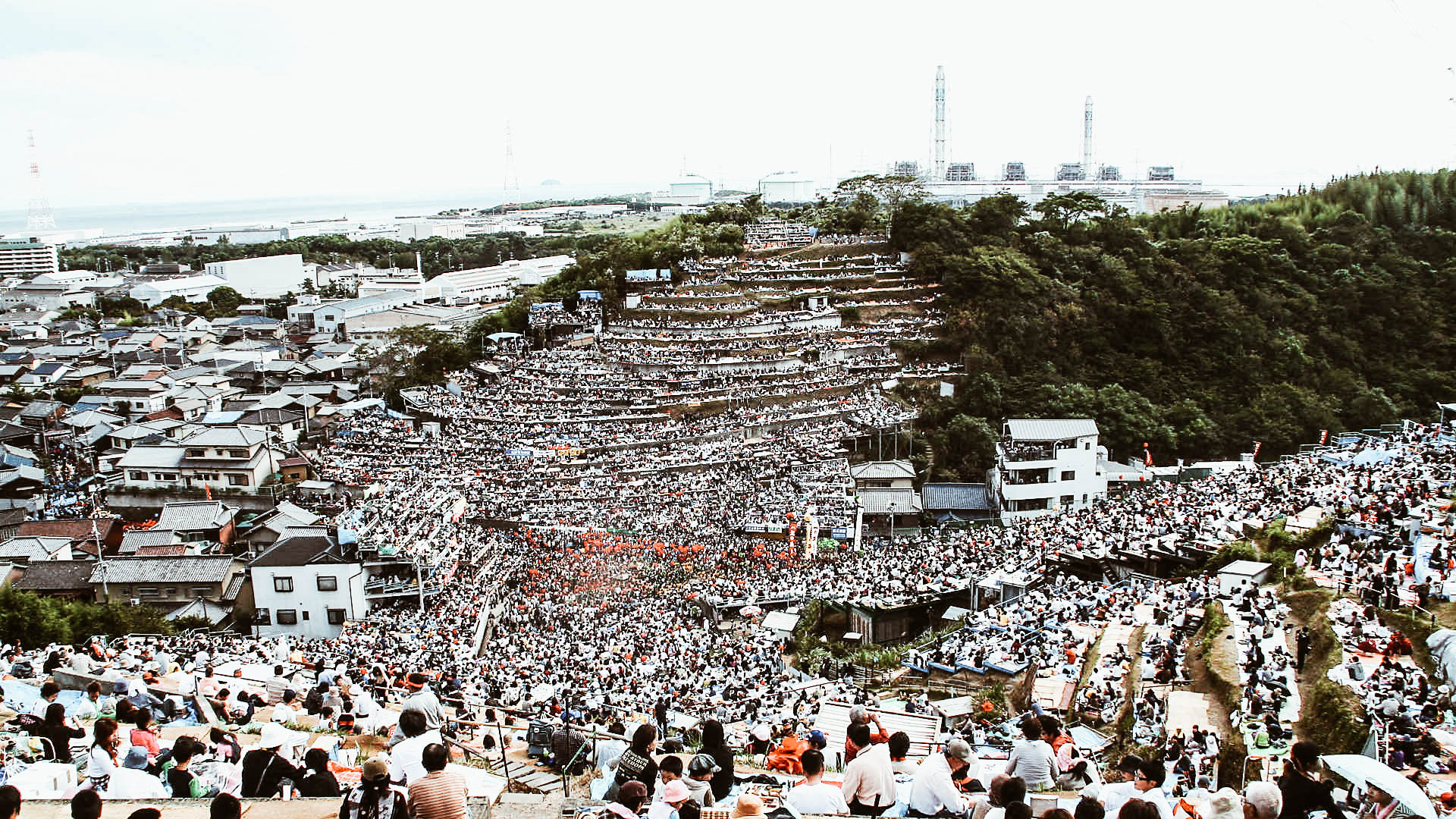
photo credits: kabegami.image.coocan.jp
The excited cries of spectators and participants make the event particularly lively and full of passion. At the end of the battle, the 3 Mikoshi and 7 Yatai are taken to the top of the mountain where prayers are said. the Nada no Kenka Matsuri ends with the descent from the mountain which will take place in the same order in which the villages have climbed.








